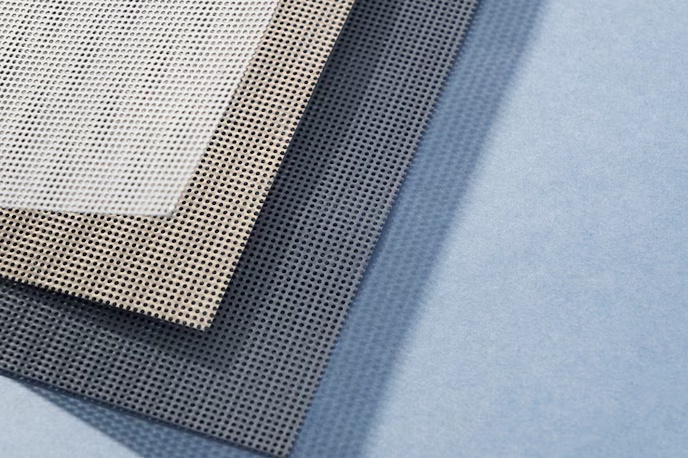Introduction
In the realm of home design and construction, the importance of soundproofing cannot be overstated. From busy urban environments to shared living spaces, unwanted noise can disrupt daily routines and diminish the quality of life for occupants. Understanding the significance of soundproofing solutions is essential for creating environments that promote comfort, tranquility, and privacy. In this comprehensive exploration, we delve into the various soundproofing techniques and materials available, examining their effectiveness in minimizing noise transmission and enhancing overall living experiences.
The Importance of Soundproofing
Unwanted noise can have a profound impact on the comfort and well-being of individuals within a living space. Whether it's the sound of traffic, neighbors, or household activities, excessive noise can lead to stress, sleep disturbances, and decreased productivity. Additionally, in multi-family dwellings or shared living arrangements, maintaining privacy and minimizing noise transmission between units is crucial for harmonious coexistence. sound proof insulation proofing solutions address these challenges by creating barriers against noise infiltration, thereby improving the quality of life for occupants and enhancing overall comfort and privacy.
Understanding Noise Transmission
Before exploring soundproofing solutions, it's essential to understand how noise is transmitted within a building. Noise can travel through various pathways, including airborne transmission, impact transmission, and flanking transmission. Airborne noise, such as voices or music, travels through the air and can easily penetrate walls, floors, and ceilings. Impact noise, such as footsteps or furniture moving, is transmitted through structural elements and can be particularly challenging to mitigate. Flanking transmission occurs when noise travels through indirect pathways, such as ductwork, electrical wiring, or gaps in construction joints. Effective soundproofing solutions address these different pathways to minimize noise transmission and create quieter living environments.
Soundproofing Techniques
-
Insulation: Insulating walls, floors, and ceilings is one of the most effective soundproofing techniques. High-density insulation materials, such as fiberglass, mineral wool, or spray foam, create a barrier against airborne noise and help absorb sound vibrations. Insulation can be installed within wall cavities, between floors, or in ceiling spaces to reduce noise transmission and improve acoustic performance.
-
Mass-Loaded Vinyl (MLV): Mass-loaded vinyl is a dense, flexible material that acts as a sound barrier when installed between layers of drywall, flooring, or ceiling tiles. MLV is highly effective at blocking airborne noise and can be used in conjunction with insulation for enhanced soundproofing. It is particularly useful in areas with high levels of noise pollution, such as near busy roads or in urban environments.
-
Resilient Channels: Resilient channels are metal or plastic strips that are installed between the structural framing and the finished surface, such as drywall or ceiling tiles. These channels decouple the finished surface from the framing, reducing the transmission of impact noise through the structure. Resilient channels are commonly used in ceilings to minimize noise from foot traffic or mechanical systems above.
-
Double or Triple Glazing: Windows are a common source of noise transmission in buildings. Double or triple glazing involves installing multiple layers of glass with air or gas-filled spaces between them to create a barrier against sound waves. This technique is particularly effective at reducing traffic noise or other external disturbances while also improving energy efficiency and thermal performance.
-
Sealing and Caulking: Gaps, cracks, and openings in walls, windows, and doors can allow noise to infiltrate living spaces. Sealing these gaps with acoustic sealant or caulking helps create an airtight barrier against noise transmission. Paying attention to details such as door sweeps, weatherstripping, and acoustic gaskets can further enhance the effectiveness of sealing and caulking techniques.
Choosing the Right Materials
When selecting soundproofing materials, it's essential to consider factors such as the type of noise to be mitigated, the level of soundproofing required, and budget constraints. While some materials may offer superior soundproofing performance, they may also be more expensive or difficult to install. Balancing effectiveness, cost, and practicality is key to choosing the right soundproofing solutions for a given project.
Benefits of Soundproofing
-
Improved Comfort: Soundproofing creates quieter and more peaceful living environments, enhancing comfort and well-being for occupants. Reduced noise levels promote relaxation, concentration, and restful sleep, contributing to overall quality of life.
-
Enhanced Privacy: Soundproofing minimizes noise transmission between rooms, apartments, or units, preserving privacy and fostering a sense of security for occupants. This is particularly important in shared living spaces or multi-family dwellings where privacy is paramount.
-
Increased Property Value: Homes and properties with effective soundproofing solutions are more desirable to potential buyers, as they offer greater comfort, tranquility, and privacy. Soundproofing can enhance property value and marketability, making it a worthwhile investment for homeowners.
-
Energy Efficiency: Some soundproofing materials, such as insulation and double glazing, also offer thermal insulation properties, improving energy efficiency and reducing heating and cooling costs. By creating a more thermally efficient building envelope, soundproofing contributes to environmental sustainability and cost savings over time.
Conclusion
In conclusion, soundproofing solutions play a crucial role in enhancing comfort, privacy, and overall living experiences. By minimizing noise transmission and creating quieter environments, soundproofing improves the quality of life for occupants and promotes a sense of tranquility and well-being. From insulation and mass-loaded vinyl to resilient channels and double glazing, a variety of techniques and materials are available to address different noise sources and pathways. Whether in residential, commercial, or industrial settings, soundproofing solutions offer tangible benefits that contribute to happier, healthier, and more harmonious living spaces. Investing in soundproofing is not only a practical measure but also a testament to the importance of creating environments that prioritize comfort, privacy, and peace of mind.


No comments yet